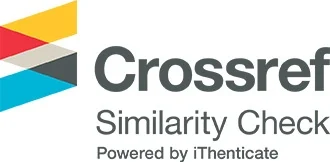Synthesis and cytotoxic evaluation of some Pyrimidine derivatives
DOI:
https://doi.org/10.65137/lmj.v1i1.11Abstract
Background: It had been found that some 5-substituted-2-thiouracils are biologically active as anticancer and as antimicrobial agents. Aim: As a part of ongoing studies in developing new pyrimidine derivatives, a series of some new thio pyrimidine derivatives were synthesized and evaluated for their cytotoxic activities. Material and method: The synthesis of targeted compounds occured via chlorosulphonation of 2-thiouracil to give a very rective sulphonyl chloride (2) which in turn was reacted with all isomers of anisidine yielding sulphonamide derivatives (3a-c) which were chlorinated with POCl3/PCl5 giving chloropyrimidines (4a-c), which were reacted with p-aminoacetophenone to give derivatives (5a-c). In another pathway, chloropyrimidines (4a-c) were reacted with hydrazine giving hydrazine derivatives (6a-c). Furthermore, chloropyrimidines (4a-c) were cyclo condensed with glycine yielding immidazopyrimidines (7a-c). In addition, hydrazinopyrimidines (6a-c) were cyclo condensed with Ac2O, trimethylformate and diethyloxalate giving derivatives (8a-c), (9a-c) and (10a-c), respectively. Finally, they were reacted with p-nitrobenzaldehyde yielding derivatives (11a-c). The cytotoxic activities of the prepared compounds were screened, and some of the synthesized compounds showed significant cytotoxic activities, either pyrimidines or condensed pyrimidines. Cell viability was determined using the trypan blue exclusion method. Cells were stained with trypan blue and counted with a hemocytometer. Results and discussion: 2-thiouracil-5- sulphonamides have a cytotoxic activity comparable to 2-thiouracil itself. Conclusion:Substitution of 2-thiouracil at 5th position may retain its cytotoxic activity.
Downloads
Published
Issue
Section
License
Copyright (c) 2021 Lebda Medical Journal

This work is licensed under a Creative Commons Attribution-NoDerivatives 4.0 International License.








